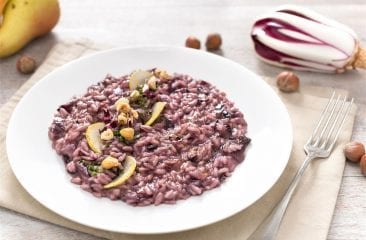On a cold day, soups and stews warm you from the inside, fill your belly and are no longer merely hearty home cooking.
As the cold winter months approach, so does your hunger for warming stews and soups. From vegetarian soups to hearty stews: These dishes not only offer great value for money and excellent taste, but for those of us with busy schedules, they offer the greatest gift of all: simplicity. To find out everything you need to know about preparing, freezing and defrosting soups and stews, read on.
Soups and stews can be made with a wide array of ingredients and flavours and in almost endless variety. Whether it’s a classic beef stew in winter or a cold soup in summer: There are no limits to your imagination. And these warming dishes are as good at incorporating vegetables fresh from the garden as they are at salvaging leftovers. Look for a smorgasbord of delicious recipe ideas here:
Soups and stews are also particularly popular if you want to prep your meals. Ready-made dishes are a stress-free option for lunches at the office or an easy idea for a soirée at the neighbours. If you’d like to understand exactly what this idea of meal prepping entails, this article will tell you everything you need to know.
It tastes even better warmed up!
Is it just me, or does tomato soup taste even better the next day? But why exactly? Lurking behind this improvement in taste are things like free glutamate and certain dipeptides. The Japanese technical term is “kokumi”. The concept does not refer to a specific flavour, but rather describes a full-bodied taste experience. The phenomenon is particularly common in dishes with animal protein and legumes, such as lentil soup with bacon or chili con carne. This effect is helped along by certain enzymes and fermentation. So you can safely consume and reheat your soups and stews for several days.

Overcooked: Which soups are suitable for freezing?
Whether you want to stock up for busy days or you’ve simply overestimated your hunger: Many soups and stews are great for freezing. Just be beware of a few certain ingredients. Soups containing cream, yoghurt and crème fraîche require caution. If you freeze these, the dairy products may coagulate when thawed. That’s because the fat separates from the water. Of course, the soup will still be edible, but for a more appealing presentation, it’s better to add the cream after thawing.
It is also recommended to leave out starches like noodles, potatoes or rice from soups and stews before freezing. These ingredients often have a gooey consistency after defrosting. And the flavour of potatoes changes, becoming slightly sweet, depending on the variety. So it’s better to cook noodles and their starchy associates fresh and add them after reheating. Soups and stews with puréed vegetables such as peas, tomatoes or pumpkin are great for freezing. For vegetables that are not puréed, we recommend cooking the part of the soup that you’d like to freeze for a shorter time. That way, after thawing, the vegetables will stay firm and crunchy rather than becoming soft and mushy.

It’s a question of finding the right container
Freezer-safe plastic containers or freezer bags are perfect for freezing. If you use a container, it is important not to fill it up all the way to the top, but to leave two to three centimetres of space. That’s because liquids expand in the freezer, so you’ll have an enormous mess on your hands in no time. And let the dish cool before you transfer it to its container. It should be completely cool before it hits the freezer, This saves energy and prevents other frozen food from thawing out briefly.
Ice cube trays are also great for measuring out that perfect portion, so you can always defrost just as much as you need. And it’s faster too. Our tip: Always label tins, bags and ice cube trays with their contents and a date so you don’t lose track. Frozen soups and stews will keep in the freezer for up to three months.
Defrosting soups and stews quickly
If your stomach is growling, it’s telling you to defrost that soup or stew quickly! We recommend taking the dish out of the freezer the day before and letting it defrost in the fridge. Or, for quantities of up to 500 grams, defrosting them in the microwave is also a great option. Most appliances have an extra defrost function for just this purpose. You should also add a bit of water as this speeds up the defrosting process. For quantities over 500 grams, throwing them on the hob is a better choice.

#liebherr, #soup, #stew, #freezing, #defrosting, #mealprepping, #preparation, #kokumi, #warmth, #healthy, #autumn, #winter, #heartyfoods, #hearty, #winterfoods, #fall




